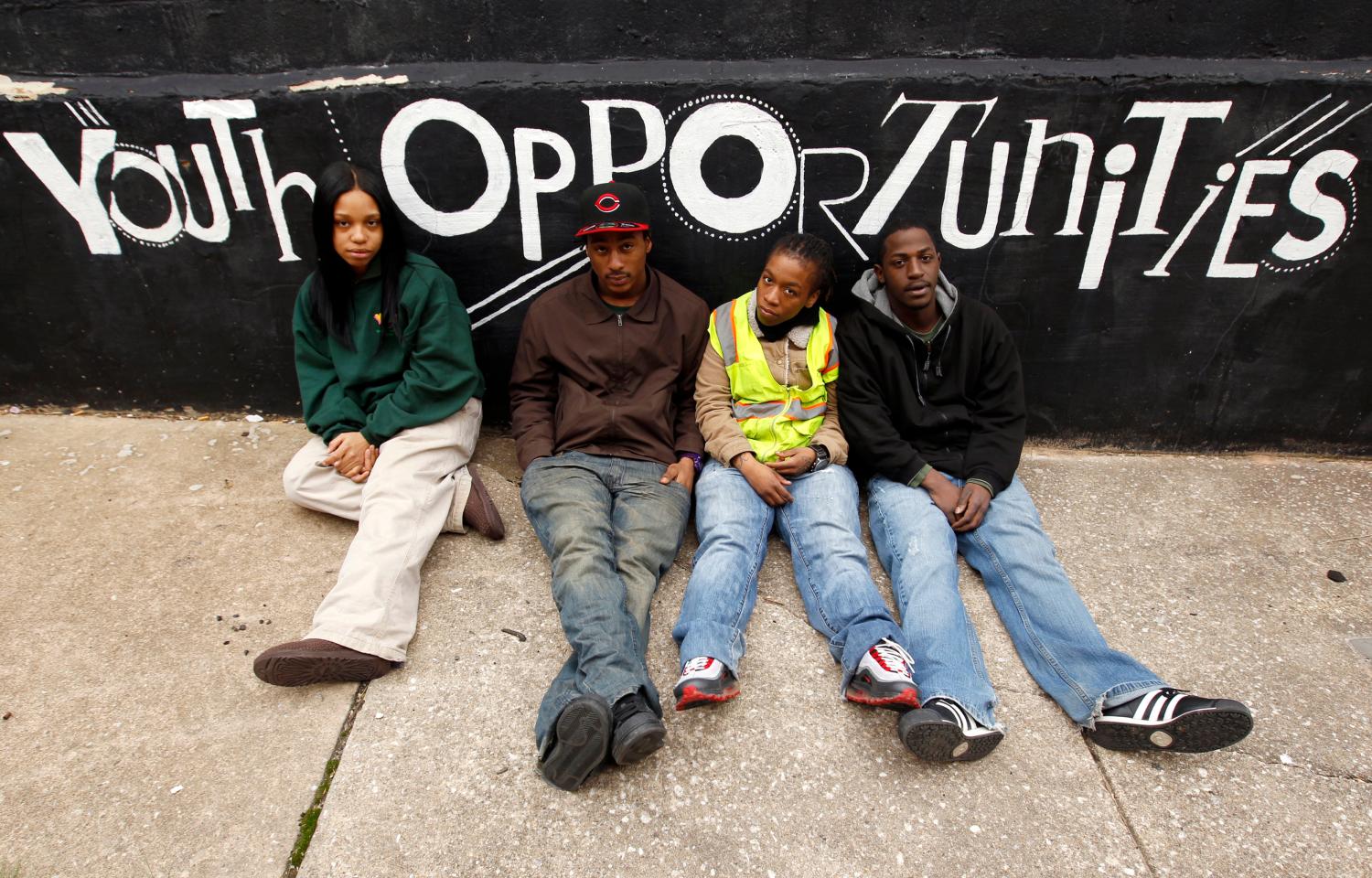This proposal is adapted from the 2016 paper, Youth Summer Jobs Programs: Aligning Ends and Means.
Overview
Summer youth employment programs have surged in popularity in the last few years. High unemployment rates among teens and young adults have raised concerns that it is becoming more difficult for young people to find pathways into the labor market, particularly for low-income, black, and Latino youth. In addition, recent urban unrest and protests have highlighted racial divides and the need to ensure that economic and educational opportunities are accessible to all young people.
Many mayors and other local officials see summer jobs programs as important vehicles to help low-income and minority youth gain work experience, expand their social and professional networks, imagine new possibilities for themselves, and engage in positive, constructive activities in time that would otherwise be unstructured. The programs are politically popular and are often a local jurisdiction’s most high-profile youth initiative. Recent evaluations are promising, linking summer jobs programs to reduced criminal activity and incarceration and improved academic outcomes.
However, summer jobs programs are harder to do well than many people assume, and they are less of a silver bullet than many hope. They require a surge of activity in a compressed time frame, typically carried out by a small staff with a budget that remains uncertain until well into planning and implementation. Local officials want to serve more young people and they want to do it well, but they often bump up against operational and budgetary constraints.
This proposal recommends a five-year, $1.5 billion federally-funded competitive grant program to support summer jobs programs locally. The program would build on the political will in cities across the country to offer summer employment opportunities to more young people. It would also deepen the knowledge base about effective practices and build local capacity to operate high-quality programs. The program would award approximately $300 million per year in a mixture of implementation and planning grants. Grants would support communities of varying sizes and demographics as well as programs at different stages of maturity. Implementation grants would include an evaluation component. A learning community would accelerate and document promising practices.
The recommendation is similar to the Opening Doors for Youth proposal in the Obama Administration’s 2017 budget request, as well as the Opening Doors for Youth Act of 2016 introduced by Rep. Scott (D-VA). Both would send $1.5 billion over four years through the public workforce system to support summer employment opportunities for young people. However, this proposal uses a competitive grant process, rather than formula funds, and focuses on building capacity at the local level to plan and implement program improvement strategies, in addition to increasing the number of youth served.
Background
Summer jobs programs: what are they, and how could they help improve employment outcomes for youth and young adults?
Summer jobs programs for young people have experienced a resurgence of interest and investment since the Great Recession, driven by concerns about high youth unemployment rates, particularly among low-income, black, and Latino youth. The 2009 federal stimulus package directed $1.2 billion to states for employment and training for youth, and it strongly encouraged states to use the money to support summer jobs programs. In response, states and localities placed more than 300,000 youth in employment in the summer of 2009, two-thirds of whom were in school and between the ages of 14 and 18.1 The stimulus dollars were the first dedicated federal funds for summer youth employment since the enactment of the Workforce Investment Act (WIA) in 1998, which ended the long-standing practice of stand-alone summer programs in favor of more comprehensive, year-round services.2 Philanthropy also made large investments in summer jobs programs in response to the recession’s effect on youth employment, and most recently, the U.S. Department of Labor made grants of $21 million to 11 communities through its “Summer Jobs and Beyond” program in 2016.3
Summer jobs programs are generally run by the city or county. They typically last five to seven weeks and provide work opportunities to teens and young adults who otherwise might struggle to find jobs. They offer a paycheck, employment experiences, and other organized activities in the service of multiple goals: increasing participants’ income, developing young people’s skills and networks to improve their labor market prospects, and offering constructive activities to promote positive behavior. Most young people are placed in subsidized positions in the public and nonprofit sectors, although most cities also secure unsubsidized and private-sector placements, which typically come with higher skill and work-readiness requirements. Recent research finds that summer jobs programs have positive effects: reducing violence, incarceration and mortality and improving academic outcomes.4 Ongoing evaluations of programs in New York City, Boston, and Chicago are likely to increase our understanding of factors that enhance program impact.5
In addition to the research cited above, nonexperimental evaluations also provide valuable intelligence. For instance, a study of Pittsburgh’s program found that youth satisfaction was highly correlated with supervisor support, and employer satisfaction was associated with clarity about their role and their level of preparation.6 An evaluation of Los Angeles’ program suggested improving work-readiness and financial literacy training, and recommended building more structured reflection into the program to help participants learn from their experiences.7
Limits and challenges
However, while the research base is growing, it has limitations. Evaluations to date do not conclusively link summer jobs programs to subsequent increases in employment and earnings. It is difficult to generalize about effectiveness, given that programs take place in communities of varying sizes and characteristics, frequently offer different services, and serve different subpopulations. Important questions remain unanswered: For whom are the impacts greatest? Which program features drive outcomes? Is there a minimum threshold of services or hours worked in order to achieve impacts? Although there is a body of evidence about what works in youth development and youth employment programs, summer jobs administrators face difficulty incorporating these lessons because of the compressed time frame, number of youth served, and funding uncertainty that they face.8 Without consensus on standards and best practices tailored to summer jobs programs, quality can vary widely between and within programs.
Operationalizing findings and recommendations from research and practice is another necessary step in building high-quality programs. A strong program does not automatically follow from good intentions. Implementation carries the day and determines the results. A successful program rests on a host of bureaucratic and logistical achievements. Administrators need to recruit, register and prepare youth; recruit, register, and prepare work sites; match youth with appropriate work sites (considering youth interests, the employers’ skill and age requirements, location, and transportation); run payroll; monitor the program; and provide guidance, coaching, and troubleshooting to both youth and employers. They need to do this at scale, in a compressed timeframe, and with budget parameters that remain fluid until well into the planning and implementation process. Moreover, given that many officials want to place as many young people as possible, it can be difficult to “divert” funds to support organizational infrastructure or additional services that would otherwise go to youth wages. Performance improvement is difficult when an organization is working at or near capacity to do the basic job at hand, which is why investments to develop and strengthen the people and systems operating programs has the potential to be so valuable.
Scaling for success: a Five-Year, $1.5 billion Competitive Grant Program to Spur Improvement, Innovation, and Assessment in Summer Youth Employment Programs
The federal government helped spur much of the current wave of summer jobs programs with its infusion of stimulus dollars under the American Recovery and Reinvestment Act in 2009. It should renew its commitment, with a focus on building capacity among localities, strengthening the evidence base about what works, encouraging experimentation, and supporting effective alignment of summer jobs with educational, training, and youth development activities that operate throughout the year. In the absence of dedicated federal support, many communities either lack the funds to operate summer jobs programs at all or lack the funds to support programs of the size and quality they would like.
Given the significant need for larger, stronger youth employment programs across the country, some within the youth development and employment fields argue for a broad infusion of federal funding, structured as a formula grant disseminated through the Workforce Investment and Opportunity Act (WIOA) system to all workforce areas, like the stimulus grants in 2009. There are pros and cons to such an investment. A formula investment can be distributed efficiently and widely and would be a visible federal commitment to summer jobs. However, pushing more money through the system without addressing core implementation and performance issues risks funding mediocrity, and leaves policymakers unable to provide evidence supporting the program’s core premise, that it makes a positive difference in the lives of young people. Although there is strong appetite locally for summer jobs programs, a large and ongoing federal investment in summer jobs programs appears unlikely in the current political climate.
A more targeted and politically feasible approach is for the federal government to support a time-limited competitive grant process to build capacity locally to operate high-quality programs while also deepening the evidence base. Grants would support programs in developing and testing approaches with particular populations and community types, refining program goals and measuring progress toward those goals, and better connecting summer jobs programs with the range of educational, training, and youth development programs that operate throughout the year. Grantees would evaluate their programs and participate in a learning community to accelerate the adoption of best and promising practices.
Looking forward, summer jobs programs are likely to need stronger private-sector and philanthropic support to sustain themselves and grow. If programs can provide clear blueprints outlining how they will achieve their goals and measure their performance, they are more likely to gain participation and financial support from employers, foundations, and other parties. This federal investment could strengthen localities’ ability to diversify their funding base.
Program design
- The Department of Labor would administer the program, and will award both planning and implementation grants. To demonstrate local support and set a path to sustainability, planning grantees must demonstrate a 30 percent local match of private, philanthropic, or public (state or local) dollars, and implementation grantees must demonstrate a 50 percent local match. Grantees must also demonstrate that federal funds are building on, rather than supplanting, existing funding. Proposals could request support to increase the numbers of participants, but expansion will not be a requirement; proposals can also request support to enhance or add services while program size remains steady.
- Planning grants will support localities in developing plans to launch, grow, or enhance summer jobs programs for young people aged 14-24. Awards will be up to $200,000 for 12 months.
- Implementation grants will support localities in launching, growing, or enhancing summer jobs programs for young people aged 14-24. Localities would not have to apply for a planning grant first, but they must demonstrate a minimum level of capacity and infrastructure. Awards will be up to $5 million over three years.
- The number of planning and implementation grants awarded each year will vary based on the number of proposals and size of their budgets. One scenario is that the $300 million annual expenditure will support an estimated 75 planning grants and 55 implementation grants, in addition to supporting related evaluations and a learning community.
- Eligible grantees will be public entities that oversee or administer the programs funded by WIOA, such as local workforce investment boards and employment services agencies. Nonprofit organizations and other public entities can also apply if they make a compelling case that their work will fill a need not addressed by the public workforce system, and they must describe how they will coordinate with the programs operated and funded by the public workforce system.
- A subset of funding (20 percent) will be dedicated to programs serving the hardest-to-employ, most at-risk, and disconnected youth to promote and learn from efforts to incorporate summer jobs into effective interventions for this population. This includes young people aged 20-24. For young people no longer in school, the need for employment does not end come September, which requires programs to adapt their models and services.
- Grants will consider regional diversity and seek to invest in communities of varying size and demographics, including large, medium, and small cities, suburban areas, and rural communities.
- Eligible uses of funds include wages for youth, staff, programming, evaluation, and technology infrastructure supporting program activities, including data and management systems.
- Grantees will commit to evaluating their programs, using research approaches appropriate to programs in different levels of development and maturity. Options will include random assignment or quasi-experimental impact evaluations, implementation evaluations, pre-experimental studies, and feasibility studies.
- Grantees will participate in a federally supported learning community designed to accelerate and document promising and effective practices, complemented by coaching and technical assistance. Foundations could partner with the federal government to fund the learning community, which could be open to other communities beyond federal grantees.
- Proposals will be required to include the following elements for activities supported by federal dollars under this grant:
- Clear program performance goals beyond number of youth served and a plan to assess progress toward these goals. Goals should relate to youth development, employment, and/or skills. Improving participants’ soft skills is a required goal.9
- Tiered programming to ensure that program services are tailored to young people of different ages (at a minimum) and other relevant circumstances, such as skill level and work-readiness. Funding could be used to develop a new tier(s) or to enhance existing tiers. (A program does not need a tiered system in place to qualify.)
- Positive, supportive relationships with adults for every participant. The intensity of these relationships can vary. For example, they could include a supervisor who conducts at least two performance assessments and commits to serving as a professional reference; a job coach who meets periodically with a participant over the summer to provide guidance on the workplace and troubleshoot problems; or a mentor who has more personal discussions about challenges and goals both in and out of the workplace.
- A strategy to integrate summer programming with other youth services that extend throughout the year, such as WIOA-funded programs, career and technical secondary and postsecondary education, afterschool programs, service corps, or other youth development programs. Grantees need to ensure that at least 30 percent of participants served through grant funds are drawn from or referred to these other youth programs.
- Commitment and support from the mayor or county executive.
- Grantees will be encouraged to experiment with new models, develop new services, enhance existing services, and establish new partnerships. Below is a list of examples, although proposals are not limited to these ideas:
- Develop stronger private-sector engagement to increase placement opportunities beyond the public and nonprofit sectors, especially for older youth.
- Coordinate with high schools to refashion the summer jobs program into an opportunity available to all juniors and seniors as a standard part of the high school experience.10
- Promote and systematize positive aspects of summer jobs programs that otherwise happen on an ad hoc basis, such as afterschool programs that hire their participants in the summer, or programs serving disconnected youth throughout the year that incorporate summer jobs to provide work experience and wages.
- Capitalize on lessons from the wave of investments promoting youth access to mainstream financial services and develop a suite of financial capability services, including access to savings accounts.11
Conclusion
In recent years, summer jobs programs have recaptured the imagination of policymakers, businesses, and the public. Young people are showing their desire for work by enrolling in droves, often exceeding the number of positions available. We need to do better by these youth by ensuring that the programs are effective and provide maximum value to participating young people and local employers.
-
Footnotes
- Jeanne Bellotti and others, “Reinvesting in America’s Youth: Lessons From the 2009 Recovery Act Summer Youth Employment Initiative” (Princeton, N.J.: Mathematica Policy Research, 2010).
- Social Policy Research Associates, “The Workforce Investment Act after Five Years: Results from the National Evaluation of the Implementation of WIA” (2004); Linda Harris, “The Tragic Loss of the Summer Jobs Program: Why It Is Time to Reinstate!” (Washington: Joint Center for Economic and Political Studies, 2007).
- JP Morgan Chase, “Building Skills Through Summer Jobs” (2015); Cities for Financial Empowerment Fund, “Summer Jobs Connect: More Than a Job: Lessons From the First Year of Enhancing Municipal Summer Youth Employment Programs Through Financial Empowerment” (2015); Brandeis University, “The Walmart Foundation’s 2011 Investment in Summer Youth Employment: Encouraging Results and Lessons Learned” (2011).
- Sarah B. Heller, “Summer Jobs Reduce Violence Among Disadvantaged Youth,” Science 346, (6214) (2014): 1219-1222; Jacob Leos-Urbel, “What Is a Summer Job Worth?” Journal of Policy Analysis and Management 33 (4) (2014): 891-911; Amy Ellen Schwartz, Jacob Leos-Urbel, and Matthew Wiswall, “Making Summer Matter: The Impact of Youth Employment on Academic Performance.” Working paper 21470 (Cambridge, Mass.: National Bureau of Economic Research, 2015); Alexander Gelber, Adam Isen, and Judd B. Kessler, “The Effects of Youth Employment: Evidence from New York City Summer Youth Employment Program Lotteries.” Working paper 20810 (Cambridge, Mass.: National Bureau of Economic Research, 2014).
- MDRC is assessing the academic and labor market impacts of New York City’s summer program as well as the mechanisms leading to these impacts. The University of Chicago’s Urban Labs is continuing to assess the Chicago program by evaluating effects on crime and violence, education, and labor market outcomes; unpacking the mechanisms driving the program effects; and understanding the challenges of scaling up a successful program. Researchers at Northeastern University are evaluating Boston’s summer program, looking at outcomes such as job readiness, financial literacy, academic performance, subsequent employment and wages, and court involvement.
- Thomas Akiva and others, “Learn and Earn: Summer Youth Employment Program” (Pittsburgh: University of Pittsburgh, 2015).
- Richard Moore and others, “Hire LA: Summer Youth Employment Program Evaluation Report 2014” (California State University at Northridge, 2014).
- Regarding the knowledge base, see the following: National Youth Employment Coalition, “PEPNet Guide to Quality Standards for Youth Programs” (2005); Center for Youth and Communities, Brandeis University, “Practical Advice Guides: Smart Strategies to Employ, Educate, and Support Youth in Employability Development Programs” (2014); Farhana Hossain and Dan Bloom, “Toward a Better Future: Evidence on Improving Employment Outcomes for Disadvantaged Youth in the United States” (New York: MDRC, 2015).
- This proposal uses a definition of soft skills developed by Child Trends: “Soft skills refers to a broad set of skills, competencies, behaviors, attitudes, and personal qualities that enable people to effectively navigate their environment, work well with others, perform well, and achieve their goals. These skills are broadly applicable and complement other skills such as technical, vocational, and academic skills.” Child Trends further specifies that soft skills include the following components: social skills, communication skills, higher-order thinking such as problem-solving and decisionmaking, self-control, and positive self-concept. See Laura H. Lippman and others, “Key ‘Soft Skills’ That Foster Youth Workforce Success: Toward a Consensus Across Fields” (Washington: Child Trends, 2015). This definition is for illustrative purposes and to provide guidance. Given that there are multiple definitions of soft skills and multiple approaches to teaching and measuring them, grantees are not required to use a curriculum or assessment tool specifically geared to the Child Trends definition.
- For example, the Community Service Society of New York City recently proposed re-imagining the city’s summer jobs program into a universal high school internship program. See Lazar Treschan, “Extending the High School Year Through Universal Summer Jobs for New York City Youth” (New York: Community Service Society, 2016).
- Heidi Goldberg and others, “Youth Employment and Financial Capability: A Municipal Action Guide” (Washington: National League of Cities, 2015); U.S. Conference of Mayors, “Financial Education and Summer Youth Programs” (2016); Cities for Financial Empowerment Fund, “Summer Jobs Connect: More Than a Job: Lessons From the First Year of Enhancing Municipal Summer Youth Employment Programs Through Financial Empowerment” (2015); Consumer Financial Protection Bureau, “Building Financial Capability in Youth Employment Programs: Insights From a Roundtable with Practitioners” (2014).








